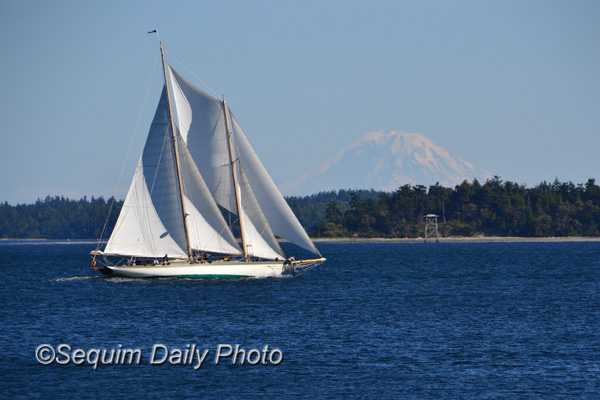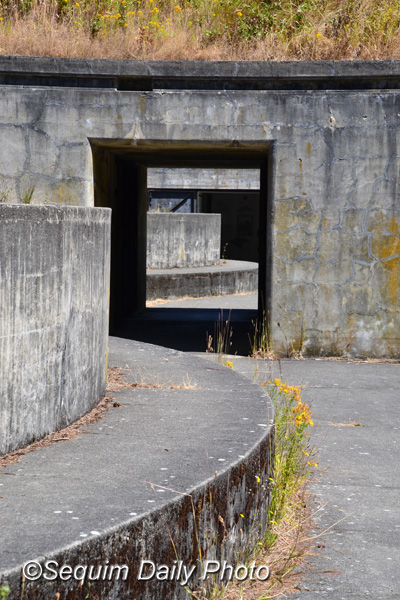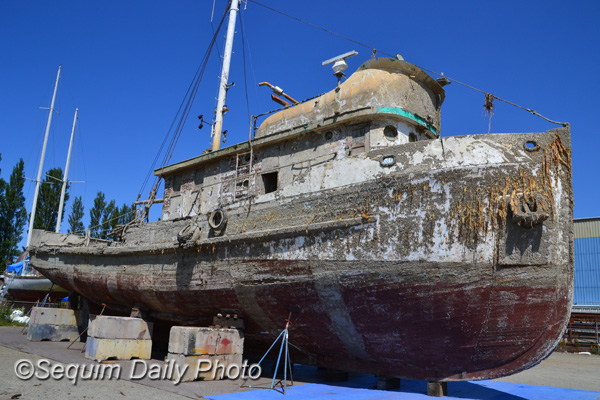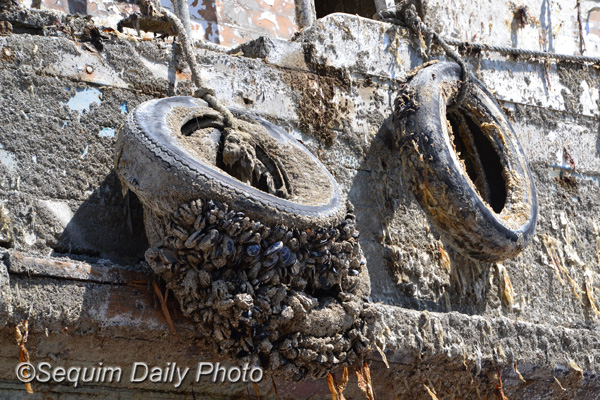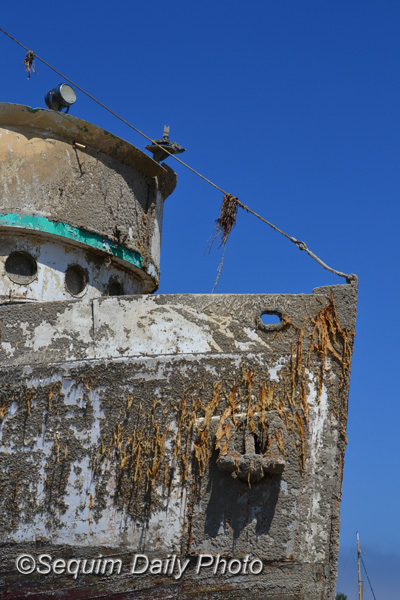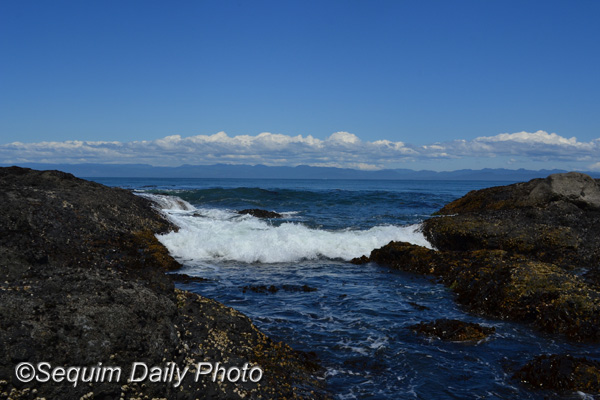Lest you think Fort Flagler is just about military history, here’s another view, taken from the beach at Marrowstone Point, the tip of Marrowstone Island, where the fort is located. This is taken on one of those glorious Pacific Northwest days when all is right with the world. In the distance to the right of the sailboat is Mount Rainier.
Category: Day Trip
Fort Flagler 2
Yesterday I showed you parts of Battery Calwell at Fort Flagler State Park. Today’s view is of “FS9”, or Fire Station 9, a former gun emplacement along the bluff overlooking Port Townsend Bay. The structure is open to the sky and a metal grillwork has been placed over the top, likely with an eye toward visitor safety. The play of light and shadow created wonderful patterns.
Fort Flagler 1
Fort Flagler State Park is a historic military installation about an hour from Sequim. Constructed beginning in 1897, it was one of three forts responsible for protecting the Puget Sound area from foreign invasion. A military presence continued here until 1953 and it became part of the state park system in 1955.
Battery Calwell, shown here, is within walking distance of a campground that’s located steps from a spectacular scenic beach. Coming upon this battery at the edge of the woods on a bluff overlooking Puget Sound felt oddly like coming upon an archaeological ruin. Despite the concrete and iron that comprised its flesh and bones it seemed very ancient and a little alien, particularly since I’ve been blessedly removed from war-making.
Huge circular structures that once housed enormous guns are now filled with a scruff of weeds. The guns were removed in 1917 and shipped to Europe for use during World War 1.
Battery Calwell is named after Captain James H. Calwell, a fallen Mexican-American War soldier who died in 1847.
Yacht Palooza
John Steinbeck's boat
If you’re familiar with the work of writer John Steinbeck, you may know “The Log from the Sea of Cortez,” a book he wrote with marine biologist Ed Ricketts after a research voyage they made in 1940. Steinbeck and Ricketts chartered the Western Flyer out of Monterey, California for six weeks and the Log is a narrative of the experience. After a long and interesting history, the Western Flyer has arrived in the Port Townsend shipyard, unquestionably worse for wear.
The Western Flyer is a 76-foot wooden purse seiner built in Tacoma in 1937. Over the years it worked as a fishing trawler in the Pacific Northwest and Alaska and as a survey vessel along the coast of British Columbia and Alaska. Eventually renamed the Gemini, the boat finally ended up in Washington’s Swinomish Slough where it sat idle beginning in 1997.
A real estate developer who owns several buildings in Steinbeck’s hometown, Salinas, California, bought the Western Flyer in 2010 intending to restore and return it to Salinas, to display inside a restaurant and boutique hotel. The boat ran out of patience last year. In September it sank in 30 feet of water. A crew raised it, pumped out the water, and put a temporary patch where planks had given way. In November it sank again.
Coated with barnacles and sea life inside and out it was hauled to Port Townsend earlier this month. Estimated restoration is $700,000 and a nonprofit group hopes to raise funds for the work. As you can see, they have their work cut out for them.
Tidepools
The tide was coming in as we explored the Salt Creek Recreation Area recently (see yesterday’s post). But my husband the fisherman couldn’t resist showing the size of some of the mussels in one of the tide pools. This one went back into the water; I suspect that gathering dinner from the pools here is a no-no. But to look at the marine life along the coast it’s hard to imagine the native peoples ever went hungry.
Salt Creek
Salt Creek Recreation Area is a county park located about an hour west of Sequim and set on a spectacular piece of the coastline of the Strait of Juan de Fuca. There is access to vibrant tide pools as well as beautiful campsites. Nearby World War II bunkers appeal to history buffs.
The tide came in as we explored the marine garden here. That’s Vancouver Island, B.C. in the distance. On a clear day like this you can see how close we are to Canada.
